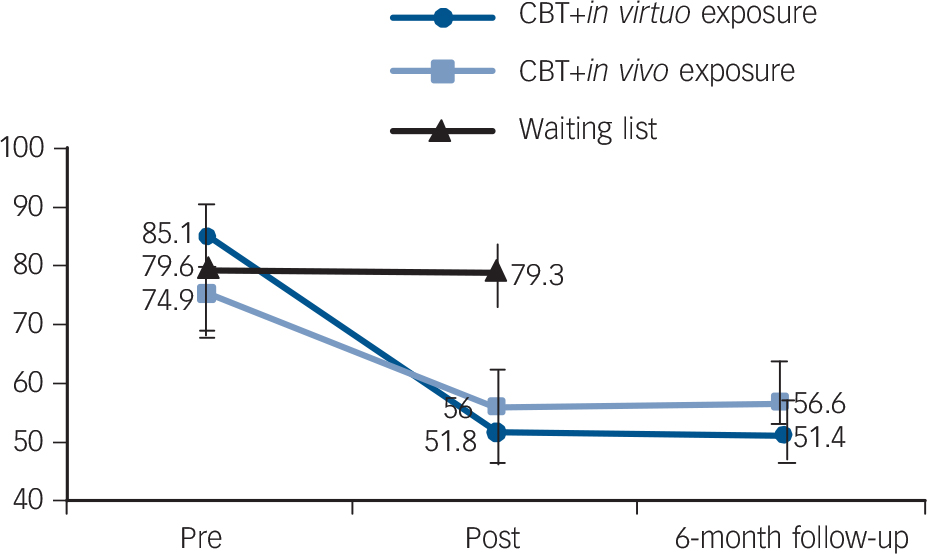Discover Pandipedia
Pandipedia is the world's first encyclopaedia of machine generated content approved by humans. You can contribute by simply searching and clicking/tapping on "Add To Pandipedia" in the answer you like. Learn More
Expand the world's knowledge as you search and help others. Go you!
Overview of Multimodal AI in Customer Service

Multimodal AI represents a significant advancement in customer service by enabling systems to integrate and analyze diverse data types—such as text, voice, images, and video—to create a unified and context-rich understanding of customer interactions[1]. This comprehensive approach allows organizations to address customer queries more intelligently, merging insights from different channels into a single workflow. By synthesizing varied data inputs into one cohesive model, these intelligent systems pave the way for more precise and responsive customer support that adapts in real time to customer needs[10].
Integration of Voice, Gesture, and Visual Recognition
Modern multimodal AI agents are designed to incorporate not only textual data but also voice, gesture, and visual inputs. For instance, advanced chatbots utilize natural language processing alongside computer vision techniques to analyze customer images and interpret voice tone and sentiment, resulting in a rich and human-like interaction experience[3]. In practice, solutions from Crescendo.ai demonstrate seamless integration where customers can switch between text, audio, and email within the same conversation, while visual troubleshooting capabilities enable the analysis of invoices, screenshots, and other images to instantly pinpoint issues[6]. Additionally, multimodal systems are capable of interpreting non-verbal cues such as facial expressions and gestures to refine sentiment analysis further, ensuring that the responses generated are empathetic and precisely tailored to the customer's emotional state[13].
Automation and Augmentation of Routine Tasks
By integrating multimodal capabilities with robust backend systems, customer service workflows are transformed through the automation of routine tasks and the augmentation of human agent efforts. Systems that analyze texts, images, voice recordings, and videos can automatically classify inquiries, initiate troubleshooting protocols, and even generate specific responses based on the context provided by the customer[4]. For example, when a customer submits an inquiry that involves a damaged product image together with a voice message, the AI system can autonomously verify the defect, cross-check customer history, and trigger a return or replacement process without additional human intervention[10]. Such integration not only lowers resolution times but also frees human agents to focus on more complex and critical issues by providing them with real-time recommendations and streamlined workflows based on comprehensive data analysis[12].
Evaluating Productivity Metrics and Efficiency Gains
The deployment of multimodal AI in customer service can dramatically improve key performance metrics by standardizing and automating a significant portion of interactions. Studies and analyses have shown that AI-driven platforms contribute to enhanced agent productivity by reducing average handling times and accelerating ticket resolutions[2]. Metrics such as the percentage of customer queries resolved entirely by AI, reduced response times, and increased self-service usage all indicate marked improvements in efficiency. For instance, automated systems are capable of achieving faster resolution times while delivering tailored, context-aware responses, which translate into lower operational costs and higher customer satisfaction scores[14]. The ability to monitor these metrics continuously ensures that organizations not only track improvements in agent performance but also make sound decisions regarding additional investments and workflow adjustments.
Change Management and Governance in AI Adoption
Integrating multimodal AI agents into customer service workflows involves significant change management measures to ensure smooth implementation and sustained improvements. A successful transition begins with pilot programs that allow organizations to experiment with small-scale deployments, build confidence among staff, and understand the specific capabilities of the new technology[11]. Engaging stakeholders from the beginning is vital, as is providing comprehensive training and establishing clear governance policies regarding ethical use and data security. Regular monitoring and continuous improvement practices are essential to adapt to new data and evolving customer needs, ensuring that the multimodal systems remain effective over time[11]. Furthermore, by setting up key performance indicators and structured feedback loops, organizations can track both the direct contributions of AI and the benefits derived from enhanced human-agent performance, facilitating transparency and accountability in AI-driven transformations[12].
Let's look at alternatives:
- Modify the query.
- Start a new thread.
- Remove sources (if manually added).
Transcript
Welcome to our quick climate technology update. This year, investors are placing record venture funding into a few key sectors that are shaping the future of sustainability. Innovations in energy storage are powering the renewable energy revolution with breakthrough battery systems and grid-scale solutions. Companies focused on carbon capture and utilization are turning atmospheric carbon into commercial value and reducing emissions. Breakthrough work in alternative protein technologies is transforming food production, while circular economy solutions are converting waste into valuable resources. In addition, climate adaptation technologies are helping communities prepare for extreme weather events. These trends highlight an exciting and transformative journey in climate technology dedicated to a greener future.
Let's look at alternatives:
- Modify the query.
- Start a new thread.
- Remove sources (if manually added).
Get more accurate answers with Super Pandi, upload files, personalised discovery feed, save searches and contribute to the PandiPedia.
Let's look at alternatives:
- Modify the query.
- Start a new thread.
- Remove sources (if manually added).
AI systems achieved historic highs in language understanding benchmarks.
Record-breaking performance scores rose dramatically on new tasks.
Multimodal AI shows advanced capabilities in vision and language tasks.
AI agents start to match human expertise in select gaming scenarios.
Generative AI adoption soared, driven by burgeoning tech investments.
Let's look at alternatives:
- Modify the query.
- Start a new thread.
- Remove sources (if manually added).
Let's look at alternatives:
- Modify the query.
- Start a new thread.
- Remove sources (if manually added).
Foundations of Inclusive Gaming Communities
Inclusive gaming communities thrive on creating environments where every player feels welcome, respected, and engaged[1]. Developers and community managers must recognize that a vibrant community not only nurtures player retention but also fuels the creative exchange of ideas and content[1]. By focusing on fostering strong connections from the outset, gaming communities can become spaces where collaboration and positive interactions are the norm[4].
Establishing Inclusive Policies and Guidelines
A cornerstone for any inclusive community is the establishment of clear, comprehensive policies that set expectations for behavior and engagement[6]. These policies should include a zero-tolerance stance on harassment and discrimination, ensuring that all members understand the boundaries of acceptable behavior[6]. In addition, displaying community guidelines prominently and reinforcing them regularly helps deter toxicity and fosters a spirit of mutual respect[4].
Onboarding Rituals and Fostering Community Identity

Welcoming new members with designated introductions and mentorship programs is a powerful way to integrate them into the community's culture and purpose[1]. Onboarding rituals that include clear explanations of the community's values and frequent engagement events contribute to a sense of belonging and continuity[4]. Such practices encourage participation and the sharing of player experiences, which reinforces community identity and loyalty over time[1].
Effective Conflict Resolution Strategies
Conflict is inevitable in any community, and establishing mechanisms for fair and transparent resolution is critical for maintaining a positive environment[5]. Leaders and moderators should ensure open and honest communication when disagreements arise, offering mediation and clear guidance throughout the process[5]. Regular team check-ins, designated roles, and thorough documentation of learnings from conflicts help prevent future issues while rebuilding trust among community members[5].
Ensuring Accessibility for All Players

Making games accessible is a fundamental aspect that supports diverse participation and ensures that players with disabilities can enjoy the gaming experience[2]. Effective measures include providing options for captioning, audio narration, screen magnification, and high contrast modes to aid players who are deaf, blind, or have other visual or auditory impairments[7]. Further, the availability of adjustable difficulty levels, text-to-speech options, and easy-to-use controllers underlines the commitment to fostering an accessible gameplay environment for all[7].
Embracing Cultural Sensitivity and Adaptation
Cultural sensitivity is essential for creating games that resonate with a global audience, requiring developers to research and represent various cultures authentically[3]. Developers should work with cultural consultants and community representatives to avoid stereotypes and ensure that characters, narratives, and settings reflect true cultural contexts[3]. Additionally, language localization and the adaptation of game content to include culturally relevant references can significantly enhance player immersion and contribute to cross-cultural understanding[9].
Conclusion

Building inclusive gaming communities requires a multifaceted approach that balances strong policies, effective onboarding, robust conflict resolution, comprehensive accessibility, and thoughtful cultural representation[1]. By integrating clear codes of conduct, welcoming rituals, open communication channels, and adaptive design practices, leaders can foster an environment where every player feels empowered and valued[6]. This holistic model not only enhances player experiences but also builds lasting connections that support the long-term success of both the game and its community[4].
Let's look at alternatives:
- Modify the query.
- Start a new thread.
- Remove sources (if manually added).
Get more accurate answers with Super Pandi, upload files, personalised discovery feed, save searches and contribute to the PandiPedia.
Let's look at alternatives:
- Modify the query.
- Start a new thread.
- Remove sources (if manually added).
Overview of Extended Reality in Mental Health Care
Extended Reality (XR) technologies, encompassing Virtual Reality (VR), Augmented Reality (AR), and Mixed Reality (MR), are increasingly used in digital therapeutics for mental health. XR provides immersive, computer‐generated environments that allow tailored exposures and engagement in controlled settings. This modality is being explored to address various mental health disorders by enhancing treatment accessibility, reducing stigma, and potentially increasing patient adherence through interactive and engaging interfaces[3][2].
Clinical Evidence for Exposure-Based Treatments in XR
A robust body of clinical evidence supports the efficacy of XR-based exposure therapies, particularly for social anxiety disorder (SAD). Virtual Reality Exposure Therapy (VRET) has been shown to create realistic and controllable social environments that enable systematic exposure to feared stimuli. Systematic reviews and meta-analyses have reported medium to large effect sizes for VRET when compared to waitlist controls, and its effects are maintained at follow-up periods up to one year[1][5].
Studies have demonstrated that digitally simulated interactions can reduce social anxiety symptoms in both individual and group therapy formats. In particular, controlled trials contrast the efficacy of VRET with traditional in vivo exposure and cognitive behavioral therapy, showing comparable outcomes between these methods[9].
Mindfulness Strategies and Mechanisms in XR Therapies
Beyond pure exposure, XR platforms are being integrated with mindfulness-based strategies to improve treatment outcomes. Mindfulness practices are incorporated to help patients develop nonjudgmental awareness of their internal experiences during exposure sessions, which may facilitate extinction learning and reduce distress over time. Evidence suggests that combining mindfulness with exposure interventions enhances the extinction of distress responses, ultimately reducing reliance on avoidant coping mechanisms[4][10].
Additionally, XR-mediated mindfulness techniques have been employed in treatments such as written exposure therapy combined with app-delivered mindfulness for conditions like PTSD, demonstrating potential benefits in reducing symptoms and comorbidities such as insomnia[6].
Clinical findings point out that while immediate mindfulness-based exposure might initially raise distress levels, continued practice may lead to improved emotional regulation and long-term symptom reduction, underpinning the value of integrating mindfulness into XR exposure protocols.
XR in Group Therapy and Social Anxiety
Another promising application of XR is in the realm of group therapy for anxiety disorders. XR platforms allow patients to interact in virtual spaces using customized avatars, which can enhance nonverbal communication cues and foster a sense of group identification. Digital group therapy in XR can compensate for some limitations observed in traditional video-conferencing, where factors such as reduced eye contact and limited movement often hinder group cohesion. Research indicates that enhanced social identification in XR environments can promote shared support, improve therapeutic alliances, and potentially lead to better treatment outcomes in social anxiety and related conditions[7].
In group settings, the ability to simulate real-world social interactions through controlled VR exposures, combined with group dynamics, may also aid in reducing isolation and enhancing overall engagement in therapy.
Regulatory Pathways and Deployment Challenges
While the clinical promise of XR in digital therapeutics has spurred interest from both clinicians and researchers, several regulatory and practical challenges remain. From a regulatory perspective, establishing approval pathways for XR-based digital therapeutics involves demonstrating measurable efficacy, ensuring user safety, and aligning with established clinical guidelines. For instance, regulatory bodies such as NICE have recently begun to recommend new digital therapies for mental health conditions like depression and anxiety, but fully approved XR interventions remain limited due to the novelty of the technology, the high costs of clinical trials, and the lengthy regulatory review processes[3].
Practical deployment challenges include issues with device accessibility, user familiarity, and integration into existing healthcare systems. Although XR headsets have become more affordable and user-friendly in recent years—with options available across a range of price points—clinicians and patients still face barriers such as limited digital literacy, inconsistent internet infrastructure, and the need for specialized training to effectively use XR tools in therapy sessions. Moreover, early-generation devices suffered from issues related to setup complexity and motion sickness; even though modern devices have addressed many of these shortcomings, overcoming residual skepticism among clinicians remains essential for widespread adoption[3].
Conclusions and Future Directions

Overall, XR technologies are emerging as a versatile and powerful tool in the digital therapeutics landscape, particularly for mental health care. Evidence supports the use of VR-based exposure therapies in reducing social anxiety symptoms as effectively as traditional methods, while the incorporation of mindfulness strategies shows promise in enhancing emotional processing and extinction learning. XR is also being successfully applied in group therapy settings to bolster social identification and engagement, which is especially relevant for treating social anxiety disorders.
Looking ahead, future research should focus on larger-scale and long-term clinical trials that not only refine the integration of mindfulness and exposure techniques into XR platforms but also address regulatory and deployment barriers. Closer attention to the development of standardized usability frameworks, enhanced training for practitioners, and clear regulatory guidelines will be crucial for the integration of XR digital therapeutics into mainstream mental health care. Continued collaboration among clinicians, technologists, and regulatory bodies is likely to facilitate both the development of innovative XR treatments and their practical deployment in clinical settings[1][9].
Let's look at alternatives:
- Modify the query.
- Start a new thread.
- Remove sources (if manually added).
Transcript
Welcome to our quantum spotlight, where the talent gap could derail tomorrow's breakthroughs. The numbers are stark: only one qualified expert exists for every three open quantum positions, meaning less than half the jobs may be filled by 2025. This shortage threatens not only innovation but also national security and economic progress. The solution lies in ramping up education and training, forging deeper partnerships between universities, industry, and government, and starting early to build a diverse, interdisciplinary workforce. Without investing in people now, the promise of revolutionary quantum advancements could stall before it even begins.
Let's look at alternatives:
- Modify the query.
- Start a new thread.
- Remove sources (if manually added).
In 2024, insured losses from natural disasters reached $140 billion.
Average U.S. home insurance rates rose nearly 34% from 2018 to 2023.
Globally, climate disasters could cost the economy $38 trillion annually by 2050.
Insurers are increasingly withdrawing from high-risk areas, creating 'insurance deserts'.
Parametric insurance payouts are based on predefined climate triggers, speeding up relief.
Let's look at alternatives:
- Modify the query.
- Start a new thread.
- Remove sources (if manually added).


























